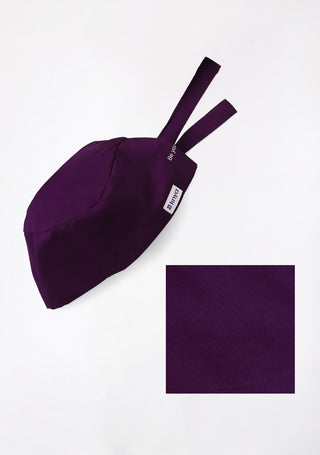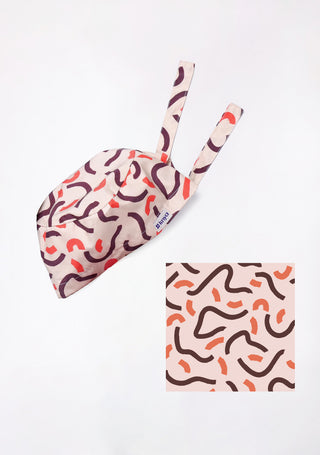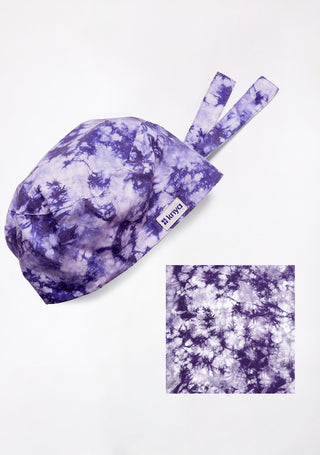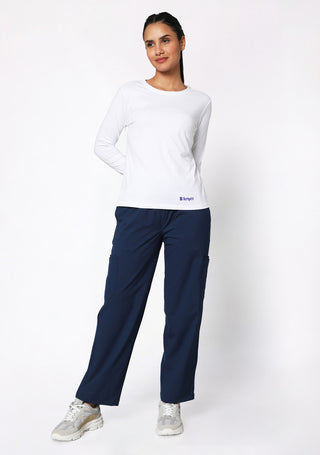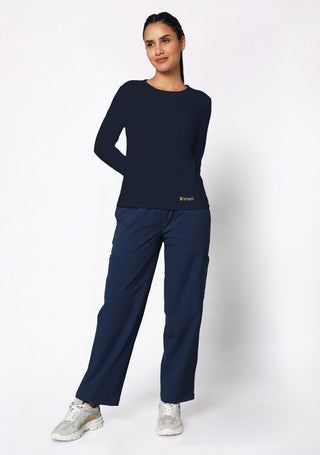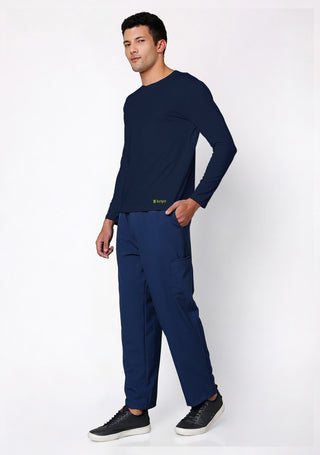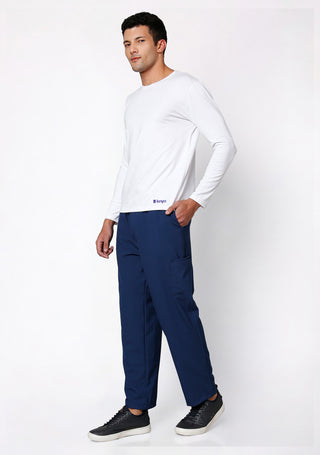Lab coats are an essential part of a healthcare professional’s and researcher’s wardrobe. While their primary purpose is protection, lab coats also convey professionalism, authority, and hygiene standards. However, the way lab coats are worn and used can vary significantly between clinical settings like hospitals and research environments such as labs or universities.
Knya lab coats are designed to meet the specific needs of both clinical and research professionals, combining protection, comfort, and professional appearance. This guide explores best practices for wearing lab coats in different settings, ensuring safety, functionality, and professionalism.
Ready to explore our amazing scrubs collection? Browse the best here
1. Choose the Right Fit
Lab coats should fit well without restricting movement:
- Clinical settings: Opt for a tailored fit that allows bending, reaching, and walking without excess fabric getting in the way.
- Research settings: Consider slightly looser coats for additional layers of clothing and flexibility around lab benches or equipment.
Knya lab coats offer multiple sizes and cuts, including options for men and women, ensuring the right fit for every professional.
2. Prioritize Fabric Type
The fabric of a lab coat affects comfort, protection, and durability:
- Clinical: Lightweight, breathable, and easy-to-clean fabrics help manage long shifts and frequent patient interactions.
- Research: Durable, chemical-resistant fabrics may be needed for handling reagents or working near equipment.
Knya lab coats are made from premium, fade-resistant materials suitable for both settings, combining durability with comfort.
Click here to explore comfortable lab coats and discover our complete collection of comfortable and stylish medical apparel
3. Maintain Hygiene and Cleanliness
Hygiene is crucial in both settings, though the focus may differ:
- Clinical: Lab coats must be clean to prevent cross-contamination between patients and staff. Wash frequently to maintain a professional look.
- Research: Coats protect from chemical spills, so immediate laundering may be necessary after exposure.
Knya lab coats are easy to clean, durable, and maintain a polished appearance after repeated washing.
4. Proper Length and Sleeve Design
Lab coat length and sleeve type impact safety and convenience:
- Clinical: Mid-thigh or knee-length coats with fitted sleeves reduce the risk of fabric brushing against patients or equipment.
- Research: Full-length coats with adjustable sleeves may provide extra protection during experiments involving chemicals or heat.
Knya lab coats offer versatile designs, including long and mid-length options, with adjustable cuffs for added safety.
5. Use Pockets Strategically
Pockets in lab coats serve different purposes depending on the environment:
- Clinical: Store pens, notepads, and medical tools for quick access during patient care.
- Research: Use pockets for small instruments, gloves, or safety goggles while keeping hands free for experiments.
Knya lab coats include functional, ergonomic pockets designed to meet the demands of both clinical and research professionals.
6. Consider Layering and Undergarments
Layering ensures comfort and protection:
- Clinical: Lightweight scrubs or undershirts beneath the lab coat keep the wearer cool and professional.
- Research: Additional layers can provide insulation and protect against minor splashes or spills.
Knya lab coats are compatible with underscrubs and layered outfits without restricting movement.
7. Practice Proper Closure and Safety Habits
Fastening the lab coat correctly enhances protection:
- Clinical: Button or snap the coat completely to maintain hygiene and professional appearance.
- Research: Ensure the coat is fully fastened, sleeves rolled or secured, and open areas minimized to protect against spills.
Knya lab coats include secure buttons and snap closures for maximum safety and functionality.
8. Maintain a Professional Appearance
Lab coats are a visual representation of professionalism:
- Clinical: A crisp, clean coat reflects competence and instills patient confidence.
- Research: A neat coat signals discipline, attention to detail, and safety awareness.
Knya lab coats are tailored to retain structure, ensuring a polished look throughout the day.
9. Avoid Common Mistakes
- Wearing lab coats with loose or trailing hems
- Skipping laundering between uses
- Overfilling pockets, causing sagging
- Ignoring safety closures or cuffs
Following these practices ensures lab coats serve their protective and professional purpose effectively.
Conclusion
Lab coats play a vital role in both clinical and research environments. While the settings and specific requirements may differ, best practices—such as choosing the right fit, fabric, length, and pocket design—ensure comfort, safety, and professionalism.
Knya lab coats are designed with these considerations in mind, providing versatile, durable, and stylish options for healthcare professionals and researchers alike. By wearing lab coats correctly and maintaining them properly, professionals can work efficiently, stay protected, and project confidence and authority in any setting.

